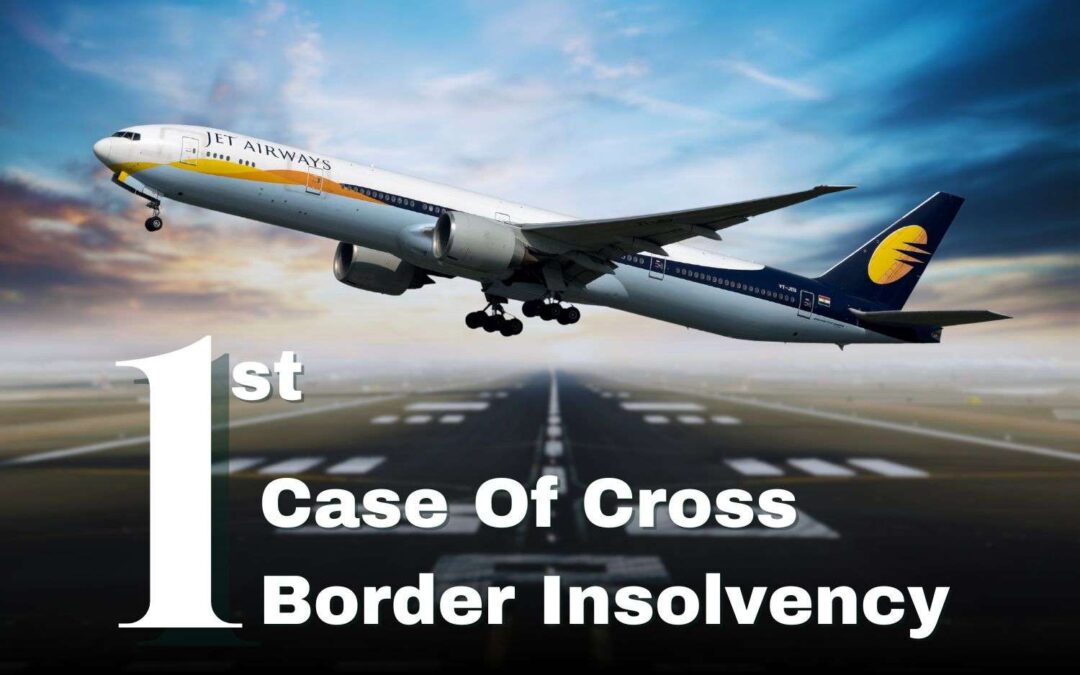INTRODUCTION
As a result of the National Company Law Appellate Tribunal’s decision to establish a “Joint Corporate Insolvency Resolution Process” under the Insolvency and Bankruptcy Code (IBC), Jet Airways became the first Indian company to experience cross-border insolvency in 2019. This marked a significant milestone for the nation’s developing insolvency law. The pivotal issue concerns the bankrupt Indian-international airline located in Mumbai, which was reported to owe over Rs 36,000 crores in total to its domestic and foreign lenders, including its operating creditors.
REPORTS OF INSOLVENCY LAW COMMITTEE
Before diving into the landmark decision of Jet Airways it is very important to understand the reports of the insolvency law committee, based on which the decision in Jet Airways was pronounced.
On 16th November, 2017 the Ministry of Corporate Affairs formed the Insolvency Law Committee. The committee has recommended various amendments in IBC, and with regards to cross-border insolvency the committee was determined to present its recommendations in two portions due to the intricate nature of the subject matter and the need for comprehensive investigation in order to implement the UNICITRAL Model Law for India. As a result, on October 16, 2018, the second portion of the ILC Report was sent to MCA.
In order to more successfully handle cases of cross-border proceedings involving debtors experiencing insolvency, States are encouraged to work with the UNCITRAL Model Law on Cross-Border Insolvency (1997) to develop a contemporary, harmonized, and equitable insolvency framework. Rather than seeking to unify substantive insolvency law, it acknowledges and promotes collaboration and coordination between jurisdictions while honouring the variations in national procedural legislation.
The committee formulated the draft Part Z which contains the set of draft guidelines with an aim to address the limitations in the prevailing cross border insolvency procedure. The draft is based on the UNCITRAL Model Laws.
Certain recommendations mentioned in Part Z are –
- It could be necessary to enhance The Insolvency and Bankruptcy Board of India’s (“IBBI”) inspection and investigative powers to incorporate an appropriate process for looking into and deciding on fines against foreign representatives;
- Amendment in section 196 of IBC to include the regulation of foreign representative within the function of IBBI.
- Amendment in the preamble of the code to reflect the inclusion of cross-border insolvency under the code.
CASE BRIEF OF JET AIRWAYS (INDIA) LTD. V. STATE BANK OF INDIA & ANR.
COMPANY APPEAL (AT) (INSOLVENCY) NO. 707/2019, NATIONAL COMPANY LAW APPELLANT TRIBUNAL
Now let’s examine this significant Jet Airways case in order to explore the nuances of cross-border insolvency.
FACTS OF THE CASE
In the year 2019, the State Bank of India approached the NCLT for initiating the CIRP against the Jet Airways as per section 7 and 9 of the IBC, 2016. While the hearing was ongoing in the NCLT, the NCLT was informed that the proceedings against the Jet Airways were already initiated in Netherlands and subsequently the court passed an order of bankruptcy against Jet Airways as per the laws prevailing in Netherlands.
Thus, the administrator appeared before the NCLT and contented that the admission of the current petitions before NCLT would result in the unusual circumstance where proceedings are being conducted against the same Corporate Debtor in parallel. An order initiating the insolvency in respect of the Corporate Debtor has already been granted by a competent court in the Netherlands. Furthermore, it would not be in the best interests of stakeholders or the efficient operation of the insolvency process for the Resolution Professional appointed by NCLT and the Administrator appointed by the Foreign Court to compete for control and possession of the assets.
DECISION OF NCLT
The Administrator’s arguments failed to persuade NCLT, which declared that the proceedings could not be put off on the grounds that the insolvency of the Corporate Debtor was started by an order from a foreign court that lacked jurisdiction to declare a company registered in India insolvent. Further the NCLT held that provisions contained in Sections 234 & 235 of the IBC were not notified by the Central Government.
Thus, NCLT stated that the proceedings before the foreign court is nullity ab-initio.
DECISION OF NCLAT
The administrator was aggrieved by the said order of NCLT approached the NCLAT. The NCLAT noted that the resolution professional could only assume control and custody of the Corporate Debtor’s assets located outside of India through an agreement with the Administrator, considering the two parties as equal. As a result, the resolution professional must come to an agreement with the Administrator designated by the Foreign Court before moving forward with the claims collation process. NCLAT also declared that Committee of creditors would not be involved because this agreement would be made in accordance with its Order. In light of the aforementioned, the NCLAT permitted the “joint” CIRP, one in Holland under the applicable bankruptcy rules and one in India under the IBC.
Resolution Professional and the Dutch Court-appointed Administrator came to an agreement on the “cross-border insolvency protocol,” which was interpreted in accordance with the Appellate Tribunal’s directives. This protocol recognized India as the “centre of main interest” and the proceedings in the Netherlands as the “non-main insolvency proceedings.” The Dutch Administrator was not granted the authority to vote in the CoC by the NCLAT. Nevertheless, he was permitted to attend the sessions in order to avoid any possible overlap of authorities.
CONCLUSION
This landmark case of Jet Airways is a notable example of how the provisions mentioned in Insolvency and Bankruptcy Code related to cross-border insolvency is an ad-hoc framework which is not sufficient to address the problem of cross-border insolvency yet. Thus, it becomes very problematic issue when there is any arrangement between the countries to take control over the assets of the corporate debtor.
In light of this, the unusual Jet Airways case prompted an intriguing attempt by the judges to integrate the Model Law framework into Indian bankruptcy law and practice until the legislation is passed.

